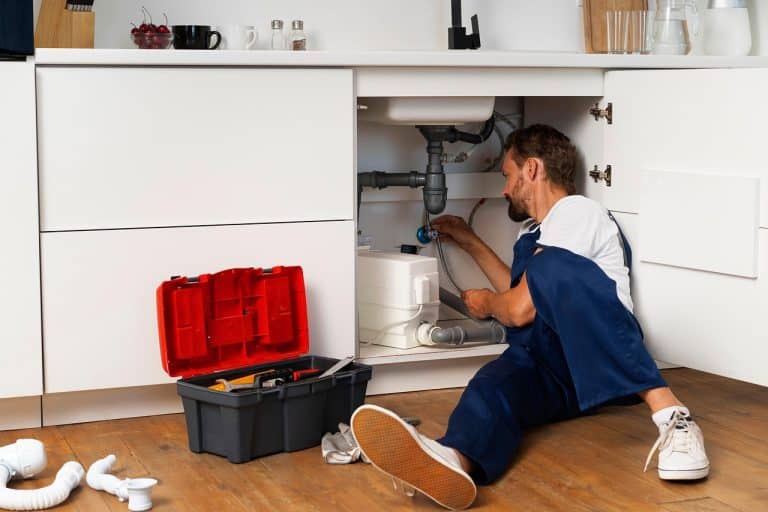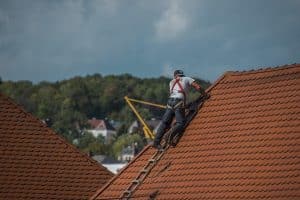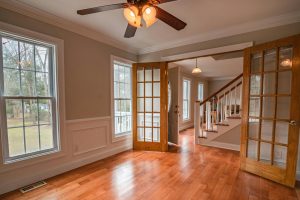Clogged pipes often start as a minor inconvenience, but they can quietly build into a serious problem. For instance, as water flow slows and pressure rises, the blockage forces water to back up through drains or weak points in the system. Over time, that trapped water can overflow, damaging floors, walls, and belongings. This article explores the connection between home flooding and clogged pipes in detail.
How Clogged Pipes Can Lead to Home Flooding
Home flooding can quickly turn a comfortable space into a costly mess. Water seeps into flooring, walls, and furniture, leaving behind stains, odors, and long-term structural damage.
As moisture lingers, it weakens foundations and encourages mold growth. Electrical systems can also become unsafe, adding another layer of risk. These problems often start with something as simple as a clogged pipe. Here’s how it can lead to such flooding:
Water Backups from Blocked Drains
When a drain clogs, water that should flow smoothly through the pipes begins to stall. Each time you wash dishes, take a shower, or flush a toilet, more water adds to the buildup behind the blockage. At first, it may drain slowly, but as pressure builds, the water has only one direction left to go—back up. It starts bubbling through sinks or bathtubs, carrying soap scum and debris.
What makes this kind of backup dangerous is how quickly it escalates. A single flush or a running tap can push water over the edge, flooding floors and seeping into nearby cabinets. Once it spreads, it soaks into flooring, drywall, and even electrical outlets.
When that happens, you need the comprehensive services of professional plumbers to locate the source of the blockage, clear the buildup safely, and repair any damage caused by the overflow.
Pressure Buildup Causing Pipe Bursts
When a pipe clogs, the normal flow of water stops, but the pressure behind it doesn’t. Each use of water adds to the buildup, forcing it to press harder against the blockage. That trapped pressure spreads through the pipe walls and joints, especially in areas already worn by age or corrosion. The material begins to strain under the force until it can no longer contain it.
Once the pipe gives way, the release is sudden and intense. Water gushes out, flooding nearby floors and soaking walls before anyone has a chance to react. The force of the burst can dislodge insulation, damage drywall, and saturate flooring materials within minutes. In multi-story homes, the water may travel downward through ceilings, dripping into rooms below and spreading damage across several levels.
Sewage Overflows from Main Line Clogs
A clog in the main sewer line disrupts the natural downward flow of wastewater. As water from sinks, showers, and toilets continues to enter the pipes, it begins to pile up behind the blockage. The pressure pushes the waste in reverse, forcing it toward the lowest drains in the system. That’s why sewage overflows usually appear first in basement bathrooms or floor drains—they sit closest to where the system gives way under the strain.
Once the water reverses course, it carries everything the sewer line should remove. Dirty water, organic waste, and gas escape into living spaces, turning a hidden blockage into a serious flooding event. The water doesn’t just sit on the surface; it spreads quickly, seeping under tiles and into wall cavities.
What begins as a clogged pipe becomes a chain reaction, where the entire drainage network works backward, filling the home with contaminated water instead of carrying it away.
Blocked Outdoor Drains and Foundation Flooding
Outdoor drains guide rainwater and runoff safely away from a home, but they often collect debris that interferes with that process. For instance, leaves, soil, and small branches gradually form a thick layer that traps water on the surface.
During a light shower, the problem may go unnoticed, but when heavier rain arrives, the clogged system can’t keep up. Water begins to collect around patios, driveways, and most critically, the base of the house.
As pooling continues, the weight of the water increases the pressure against the foundation. Concrete may appear solid, but it contains small pores and joints that become pathways for moisture under sustained pressure. Water slowly seeps through these weak spots, entering basements or crawl spaces. The first signs are often damp walls or musty odors, followed by visible stains and peeling paint.
Conclusion
What begins as a slow drain or minor blockage can quickly create conditions that overwhelm your home’s plumbing system. For instance, when water cannot move freely through a drain, it starts to back up and overflow, soaking floors and walls and leaving behind moisture that can cause mold and structural damage.
Additionally, a clog that traps water inside a pipe increases pressure until the pipe bursts, sending water through walls, under flooring, and into living spaces. Such scenarios show how neglecting minor plumbing issues can lead to expensive repairs and health risks.













